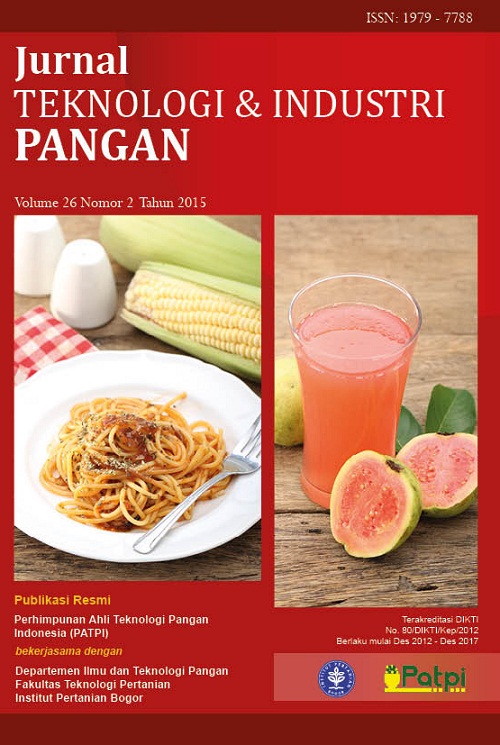PERUBAHAN ALERGENISITAS PROTEIN KACANG KEDELAI DAN KACANG BOGOR AKIBAT PENGOLAHAN DENGAN PANAS
Abstract
Legumes contain protein as a potential allergen. Heating process was expected to eliminate the protein allergen. The aim of this study was to assess the changes in molecular weight and allergenicty of soybean grobogan variety and bambara groundnut proteins due to heat processing, i.e. boiling, steaming, oven, and roasting protein isolate was prepared by pH adjusting. SDS-PAGE method was used to determine the profile of protein molecular weight and the alergenicity was determined by ELISA method. Protein molecular weight profile of grobogan soybean and bambara groundnut that have been boiled, steamed, ovened, and roasted for 30 minutes showed variations when compared to the unheated soybean and bambara groundnut protein isolate. The amount of protein detected was reduced compared with unheated soybean and bambara groundnut. The protein allergens in grobogan soybean had molecular weight 110.0, 98.3, 84.5, 67.4, and 60.2. The heat treatment for 30 minutes removed allergenicity as indicated by no detectable protein band in immunoblotting results and the smaller Optical Density value compared with unheated soybean. Thus, the allergenicity of soybean protein due to heat processing was minimized. Bambara groundnut had protein allergens with molecular weight 113.1, 59.8, and 25.2 kDa. Protein allergen with molecular weight 25.2 and 59.8 kDa were detected in bambara groundnut processed through boiling and steaming for 30 minutes, respectively, but ELISA result showed there were still protein allergen of bambara groundnut after the heat treatment for 30 minutes.
Authors

This work is licensed under a Creative Commons Attribution-NonCommercial 4.0 International License.

